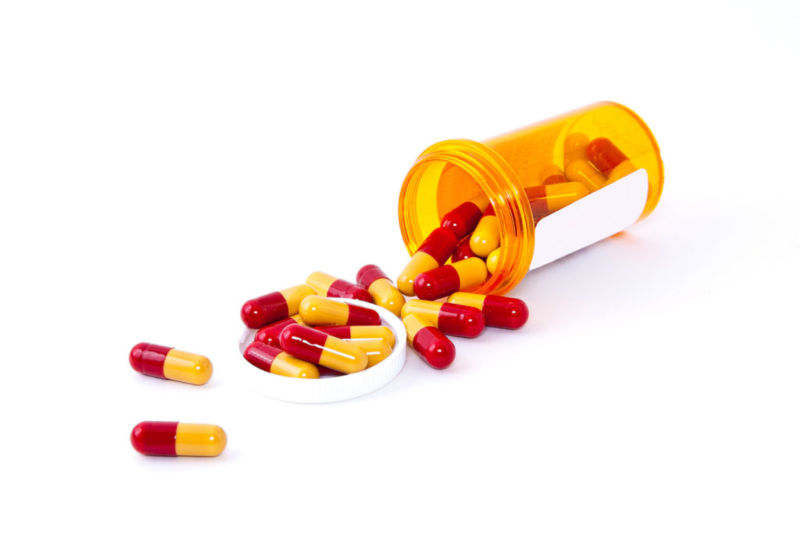Medical Uses of Naltrexone: Treating Addiction and Beyond

Naltrexone, a powerful opioid antagonist, has revolutionized the treatment of addiction and is showing promise in various other medical applications. This comprehensive guide explores the primary and emerging uses of Naltrexone, offering insights into its role in combating addiction and its potential in treating other conditions.
Table of Contents
- Primary Medical Uses of Naltrexone
- Emerging and Off-Label Uses of Naltrexone
- Future Directions in Naltrexone Research
- Considerations and Precautions
- Conclusion
- Glossary
- References
- Related
Primary Medical Uses of Naltrexone
Naltrexone's primary medical uses focus on addiction treatment, specifically for alcohol and opioid dependence. Let's delve into how this medication is transforming lives in these critical areas.
Naltrexone for Alcohol Dependence
Alcohol Use Disorder (AUD) affects millions worldwide, causing significant health, social, and economic burdens. Naltrexone has emerged as a game-changer in AUD treatment.
Learn more about Naltrexone's role in alcohol dependence treatment
| Benefits of Naltrexone in Alcohol Dependence | Details |
|---|---|
| Reducing Alcohol Cravings | Diminishes the urge to drink by blocking alcohol's pleasurable effects, helping resist temptation, especially in high-risk situations. |
| Preventing Relapse | Reduces rewarding effects of alcohol, preventing slip-ups from turning into full relapses and enhancing long-term sobriety or controlled drinking. |
| Decreasing Alcohol Consumption | Leads to reduced alcohol consumption in patients who continue to drink, crucial for harm reduction and eventual abstinence. |
| Enhancing Cognitive Behavioral Therapy | Complements psychological interventions by reducing alcohol's reinforcing effects, improving overall treatment outcomes. |
The Sinclair Method
The Sinclair Method is a specific protocol for using Naltrexone in alcohol dependence treatment:
- Protocol: Patients take Naltrexone one hour before drinking.
- Effect: Over time, this leads to pharmacological extinction of alcohol cravings.
- Outcomes: Promising results in reducing or eliminating alcohol consumption.
Efficacy and Success Rates
| Outcome | Effectiveness |
|---|---|
| Reduction in Heavy Drinking | Reduces risk by up to 83% compared to placebo. |
| Reduction in Drinking Days | Decreases drinking days by 4% compared to placebo. |
| Combined Therapy | Increases abstinence rates by 25-50% when combined with counseling. |
Naltrexone for Opioid Dependence
Opioid addiction is a global crisis, claiming countless lives and devastating communities. Naltrexone offers hope in this challenging landscape.
Explore Naltrexone's impact on opioid dependence treatment
| Mechanism in Opioid Dependence | Description |
|---|---|
| Blocking Opioid Effects | Binds to opioid receptors, preventing activation and eliminating euphoric and sedative effects. |
| Reducing Cravings | Modulates the brain's reward system to decrease cravings for opioids, crucial for maintaining abstinence. |
| Preventing Relapse | Prevents opioids from exerting effects if taken during treatment, reducing risk of relapse and overdose. |
| Supporting Long-term Recovery | Helps focus on recovery by reducing cravings and providing stability during early recovery stages. |
| Form | Details |
|---|---|
| Oral Naltrexone | Daily tablet, requires motivation for adherence, effective when compliance is maintained. |
| Injectable Naltrexone | Monthly intramuscular injection (Vivitrol), ensures consistent medication levels, improves adherence. |
Effectiveness in Opioid Dependence Treatment
| Outcome | Effectiveness |
|---|---|
| Increase in Abstinence Rates | Up to 90% higher than placebo with injectable Naltrexone. |
| Reduction in Opioid-Related Hospitalizations | Associated with a 17% reduction. |
Emerging and Off-Label Uses of Naltrexone
While Naltrexone's primary uses in alcohol and opioid dependence are well-established, researchers are exploring its potential in treating various other conditions.
Discover more about Naltrexone's emerging and off-label uses
Behavioral Addictions
Naltrexone's ability to modulate the brain's reward system makes it a potential treatment for behavioral addictions.
| Condition | Details |
|---|---|
| Gambling Disorder | Reduces gambling urges and behavior; particularly effective for those with a family history of alcoholism. |
| Compulsive Sexual Behavior | Preliminary research suggests potential in reducing compulsive sexual thoughts and behaviors. |
| Internet Gaming Disorder | Early research shows promise in reducing gaming time and cravings. |
Eating Disorders
| Condition | Details |
|---|---|
| Binge Eating Disorder | Naltrexone, particularly with bupropion, reduces binge eating episodes and improves impulse control. |
| Bulimia Nervosa | Limited research suggests it may reduce binge-purge cycles; more extensive studies are needed. |
Pain Management
Low-Dose Naltrexone (LDN) has shown potential in managing various chronic pain conditions.
| Condition | Details |
|---|---|
| Fibromyalgia | LDN can reduce pain and improve quality of life by modulating pain signaling. |
| Complex Regional Pain Syndrome (CRPS) | Preliminary research indicates potential for symptom relief through anti-inflammatory properties. |
| Chronic Low Back Pain | Results are mixed, requiring more research to establish effectiveness. |
Autoimmune Disorders
| Condition | Details |
|---|---|
| Multiple Sclerosis (MS) | Reports suggest improvements in fatigue and quality of life; research ongoing for efficacy and mechanism. |
| Crohn's Disease | Preliminary studies suggest potential for inducing remission through anti-inflammatory properties. |
| Rheumatoid Arthritis | Limited research available, with more extensive studies needed to confirm efficacy. |
Psychiatric Disorders
| Condition | Details |
|---|---|
| Depression | Particularly in combination with antidepressants, shows promise in treatment-resistant cases. |
| Post-Traumatic Stress Disorder (PTSD) | Potential in reducing symptoms, especially in cases with concurrent alcohol use disorder. |
| Borderline Personality Disorder | Limited evidence suggests it may help manage impulsivity and self-harm behaviors. |
Obesity and Weight Management
| Condition | Details |
|---|---|
| Contrave (Naltrexone + Bupropion) | FDA-approved for chronic weight management by reducing appetite and cravings. |
| Metabolic Syndrome | Research suggests potential improvement in insulin sensitivity and reduction in inflammation. |
Future Directions in Naltrexone Research
The medical community continues to explore new potential applications for Naltrexone. Some areas of ongoing research include:
| Research Area | Potential Application |
|---|---|
| Smoking Cessation | Investigating potential use in combination with nicotine replacement therapies. |
| Parkinson's Disease | Exploring possible neuroprotective effects in early-stage studies. |
| Autism Spectrum Disorders | Limited studies investigating potential benefits in managing symptoms. |
| Alzheimer's Disease | Exploring potential in managing behavioral symptoms of Alzheimer's. |
| Cancer | Preclinical studies suggest anti-tumor properties; further research needed. |
Considerations and Precautions
While Naltrexone shows promise in various medical applications, it's crucial to consider the following:
| Consideration | Details |
|---|---|
| Off-Label Use | Many emerging uses are off-label and may not be covered by insurance; consult with healthcare providers. |
| Individual Response | Responses vary; what works for one individual may not work for another. |
| Potential Side Effects | Includes nausea, headache, and dizziness; in rare cases, may affect liver function. |
| Interaction with Opioids | Blocks opioid pain medications, important to remember in emergencies. |
| Ongoing Research | Many emerging applications are still in the research phase and require further validation. |
Conclusion
Naltrexone's journey from treating opioid and alcohol dependence to being explored for various other medical conditions showcases the dynamic nature of pharmacological research. While its primary uses in addiction treatment remain crucial, the potential for Naltrexone to impact other areas of medicine is exciting.
As research continues, Naltrexone may play a role in treating a wider range of conditions, potentially improving the lives of many beyond those struggling with addiction. However, it's important to approach these emerging applications with cautious optimism, recognizing the need for rigorous scientific validation.
For individuals considering Naltrexone for any medical use, consulting with a healthcare provider is essential for personalized advice based on the latest research and individual health considerations.
The story of Naltrexone serves as a powerful reminder of the importance of continued medical research and the potential for existing medications to find new applications in treating diverse health conditions.
Glossary
- Addiction
- A chronic disorder characterized by compulsive substance use despite harmful consequences, leading to long-term changes in brain function and behavior.
- Alcohol Use Disorder (AUD)
- A medical condition characterized by an inability to control alcohol use despite negative consequences, often leading to dependence and addiction.
- Antagonist
- A substance that blocks or dampens the action of a receptor, often used to counteract the effects of other drugs or endogenous substances.
- Behavioral Addiction
- A form of addiction involving compulsive engagement in rewarding behaviors such as gambling, eating, or using the internet, despite negative outcomes.
- Binge Eating Disorder
- A condition characterized by episodes of consuming large amounts of food in a short time, often accompanied by feelings of shame or guilt.
- Borderline Personality Disorder
- A mental health condition marked by unstable moods, behavior, and relationships, often involving impulsive actions and fear of abandonment.
- Bulimia Nervosa
- An eating disorder characterized by binge eating followed by purging, such as vomiting or using laxatives, to prevent weight gain.
- Complex Regional Pain Syndrome (CRPS)
- A chronic pain condition affecting one limb, often after an injury, characterized by prolonged pain that is disproportionate to the initial injury.
- Contrave
- A prescription medication that combines naltrexone and bupropion, used to help with weight management in people who are overweight or obese.
- Crohn's Disease
- A chronic inflammatory bowel disease that affects the lining of the digestive tract, leading to abdominal pain, diarrhea, and other symptoms.
- Fibromyalgia
- A chronic disorder characterized by widespread musculoskeletal pain, fatigue, and tenderness in localized areas.
- Gambling Disorder
- A behavioral addiction involving compulsive gambling, leading to financial, social, and personal consequences.
- Low-Dose Naltrexone (LDN)
- A form of naltrexone used in small doses to modulate the immune system and is being explored as a treatment for various chronic conditions.
- Metabolic Syndrome
- A cluster of conditions, including high blood pressure, high blood sugar, excess body fat around the waist, and abnormal cholesterol levels, that increase the risk of heart disease and diabetes.
- Multiple Sclerosis (MS)
- A chronic disease in which the immune system attacks the central nervous system, leading to symptoms such as fatigue, pain, and mobility issues.
- Naltrexone
- An opioid antagonist used to treat alcohol and opioid dependence by blocking the euphoric effects of these substances.
- Opioid
- A class of drugs that includes prescription pain relievers, heroin, and synthetic opioids like fentanyl, often associated with addiction and overdose.
- Opioid Dependence
- A medical condition in which an individual is reliant on opioids to function normally, often accompanied by tolerance and withdrawal symptoms.
- Post-Traumatic Stress Disorder (PTSD)
- A mental health condition triggered by experiencing or witnessing a traumatic event, causing symptoms such as flashbacks, nightmares, and severe anxiety.
- Relapse
- The return to substance use after a period of abstinence, often considered a normal part of the recovery process from addiction.
- Rheumatoid Arthritis
- An autoimmune disorder that causes chronic inflammation of the joints, leading to pain, swelling, and eventual joint damage.
- The Sinclair Method
- A treatment for alcohol use disorder that involves taking naltrexone before drinking to reduce the pleasurable effects of alcohol and diminish cravings.
- Vivitrol
- A brand name for the extended-release formulation of naltrexone, administered via intramuscular injection to treat opioid and alcohol dependence.
References
Medical Uses of Naltrexone: Treating Addiction and Beyond
- Naltrexone: A History and Future Directions - PMC - National …
- Evidence-Based Pharmacotherapies for Alcohol Use Disorder
- Naltrexone - Wikipedia
Emerging and Off-Label Uses of Naltrexone
- Off-Label Use of Naltrexone in Pica and Other Compulsive
- Low-Dose Naltrexone (LDN)—Review of Therapeutic Utilization
- What You Need To Know About Low Dose Naltrexone
Future Directions in Naltrexone Research
- Naltrexone: A History and Future Directions - ResearchGate
- Naltrexone: A History and Future Directions - PubMed
- Trends in the Use of Naltrexone for Addiction Treatment among …

